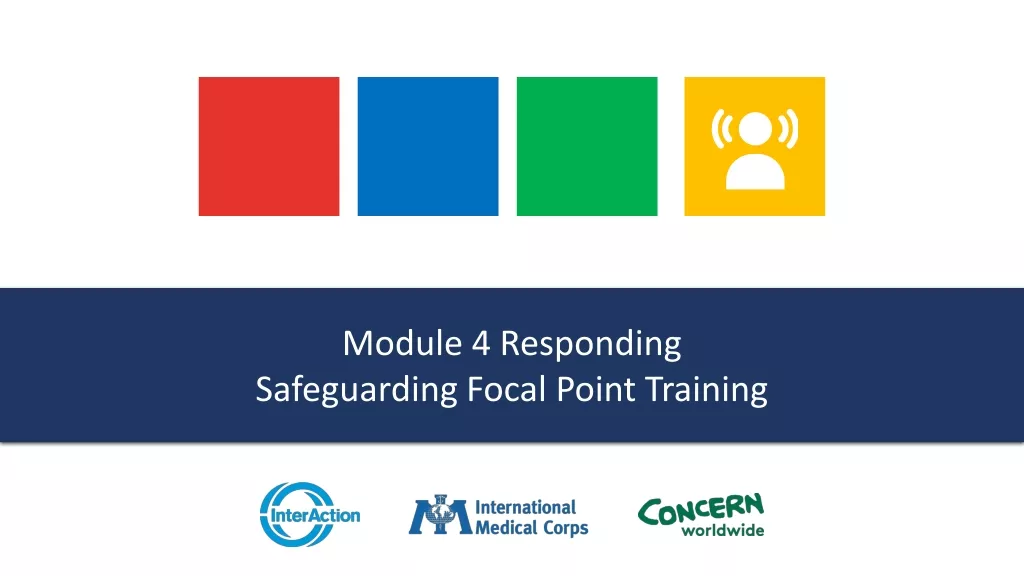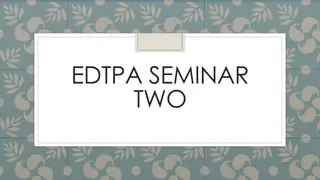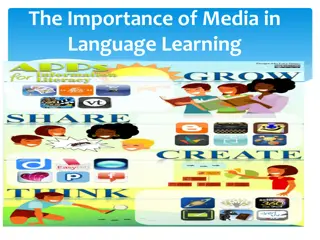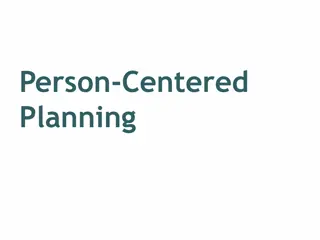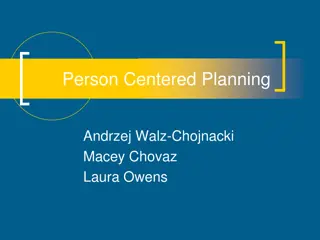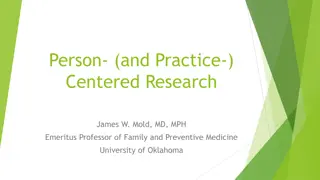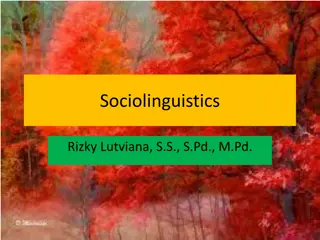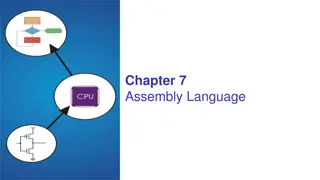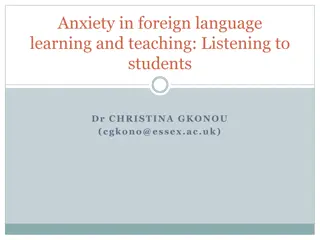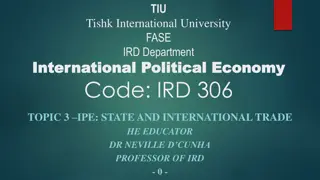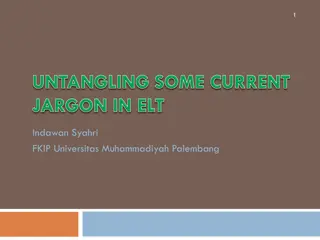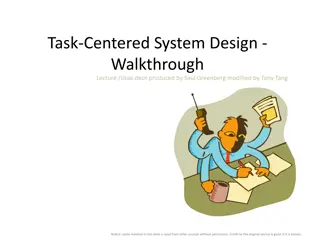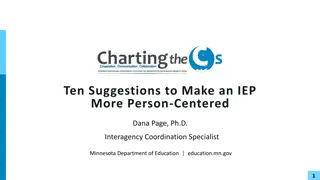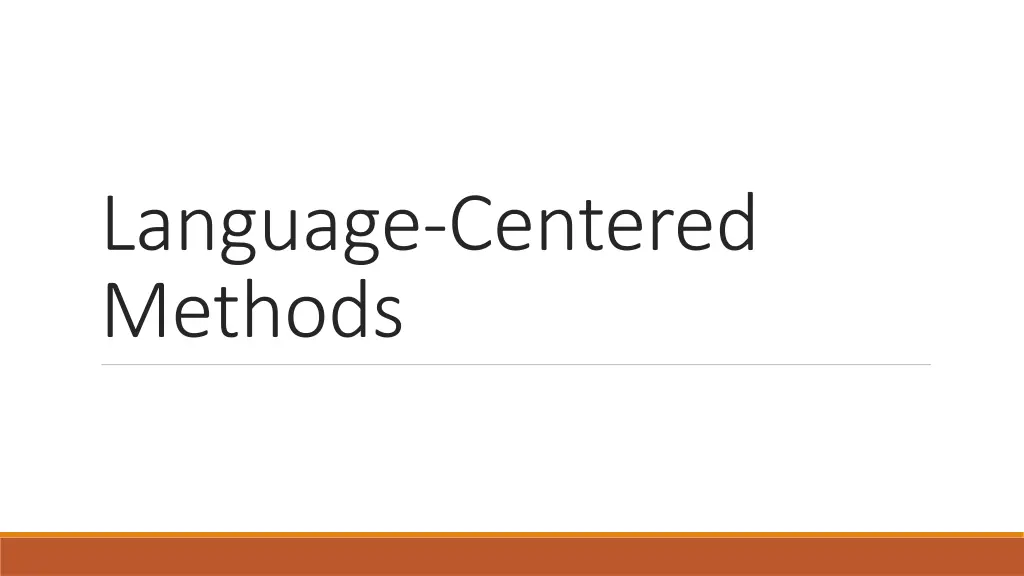
Evolution of Language Teaching Methods and Theories
Explore the evolution of language teaching methods and theories, from the development of new methods through experience and experimentation to the Audiolingual Method and the Theory of Language. Discover the structural situational method, theory of language learning, and key assumptions underlying language acquisition. Dive into the essential characteristics of language-centered methods and the linear connections among phonemes, morphemes, phrases, and sentences in language structure.
Uploaded on | 0 Views
Download Presentation

Please find below an Image/Link to download the presentation.
The content on the website is provided AS IS for your information and personal use only. It may not be sold, licensed, or shared on other websites without obtaining consent from the author. If you encounter any issues during the download, it is possible that the publisher has removed the file from their server.
You are allowed to download the files provided on this website for personal or commercial use, subject to the condition that they are used lawfully. All files are the property of their respective owners.
The content on the website is provided AS IS for your information and personal use only. It may not be sold, licensed, or shared on other websites without obtaining consent from the author.
E N D
Presentation Transcript
Language-Centered Methods
Language teaching methods evolve and improve over time experience + experimentation =development of a new method There might be overlapping tendencies
Audiolingual Method Audiolingual Method illustrates the essential characteristics of language-centered methods structural situational method: Selection Gradation presentation
Selection: choice of lexical and grammatical content Gradation: organization and sequencing of content Presentation: aims and activities of classroom teaching Other program under this category: Army Specialized Training Program (ASTP) structural situational method
Theory of Language Theory of Language by American structural linguists during the 1950s language as a system of systems consisting of several hierarchically linked building blocks: Phonemes Morphemes Phrases Clauses Sentences
They are linearly connected: phonemes .morphemes .phrases language is aural oral importance of listening and speaking Speech = the basis of language Structure = the heart of speech Every language has a finite number of structural patterns: can be analysed, described, systematized, and graded, and be learnt and taught
Theory of Language Learning Theory of Language Learning Based on behaviourism They rejected explanation of human behavior in terms of emotive feelings or mental processes human behavior = series of stimuli .trigger a series of corresponding responses. Learning= stimulus, response, and reinforcement
Assumptions 1. Learning to speak a language is the same as learning to ride a bicycle or drive a car. 2. Language learning is just a process of mechanical habit formation through repetition (overlearning), (practice and make it second nature) 3. Habit formation takes place by means of analogy (perception of similarities and differences) rather than analysis (problem solving). Inductive rather than deductive = pattern practice
4. Language learning is a linear, incremental, additive process. mastering of one discrete item at a time and moving to the next 5. Discrete items of language should be introduced in carefully constructed dialogues embedded in a carefully selected linguistic and cultural context. Language should not be separated from culture.
Theory of Language Teaching Theory of Language Teaching Audiolingual theory of language teaching is a mirror image of its theory of language learning forming habits assimilate and use Teaching= planned presentation of those (sub)systems Stages: use a book to model linguistic input Be a skilful manipulator of questions
Linguistic input: in the form of dialogues The emphasis on dialogues also takes care of the primacy of speech as well as the strict sequencing of four language skills in terms of Listening,Speaking,Reading,and Writing. Pattern practice: the most important aspect of teaching habitual and automatic performance of learners Teacher .drilling patterns structural linguistics + behavioral psychology
Content Specifications Content Specifications synthetic approach to syllabus design Including: discrete items of grammatical and lexical forms Teacher: presents the elements of language forms Learner: puts them together to figure out the totality of the language system
Selection frequency : learners are likely to encounter Range: the spread of an item across texts or contexts Availability: the degree to which an item is necessary and appropriate.
Gradation Complexity: from the easy to the difficult Regularity: from the regular to the irregular Productivity: from the more useful to the less useful
CLASSROOM PROCEDURES CLASSROOM PROCEDURES The language centered pedagogist adopted an almost exclusive form based approach to input modifications. The language centered pedagogist believe that form- based input modifications are not only necessary and but also sufficient for the development of linguistic as well as pragmatic knowledge /ability in the L2. The grammatical items of the target language are introduced to the learners mostly through structural patterns.
Drills included: Mechanical: automatic manipulative patterns aimed at habit formation Meaningful: responses may be correctly expressed in more than one way. Communicative: help learners transfer structural patterns to appropriate communicative situations So: There is carefully controlled linguistic input
Interactional Activities Interactional Activities Ps: presentation practice production
Presentation already selected and graded linguistic items are introduced through a carefully constructed dialogue that contains several examples of the new items. The dialogue includes new insights into the culture of the target language community. Memorization teacher acts as the language informant
Practice learners practice the new linguistic items through mechanical, meaningful, or communicative drills isolated, decontextualized sentences Substitution tables language skills are presented and practiced in isolation and in rigid sequence
Production the opportunity to roleplay dialogues similar to the ones introduced in class modify the language they have memorized in order to vary their production. interaction as a textual activity neglecting it as interpersonal activity
A CRITICAL A CRITICAL ASSESSMENT ASSESSMENT Very teacher friendly neat rules-of-thumb framework for teachers used at all proficiency levels narrowly defined objective of mastery of grammatical structures
coherently designed syllabuses with preselected and pre-sequenced items Assessment of discrete items of language easy to train a large number of teachers
However There is lack of knowledge of appropriate use teaching of usage does not guarantee a knowledge of use Structural means can not work for communicative ends Students lack pragmatic knowledge
There is no internalization of the underlying language system Ignoring the complexity of communication Learners can not transfer their knowledge of isolated items of grammar and vocabulary and automatically apply it to real-life communicative situations outside the classroom.
Positive points: Language learning does involve learning individual items (Spolsky, 1989, p. 61) just the way behaviorists advocated. An explicit focus on the formal properties of the language might help the learner systematically examine, understand, and organize the linguistic system of the language (Bialystok, 1988). Explicit teaching of forms or structures of the target language is beneficial to learners at a particular point in their acquisition of the target language (Stern, 1983). A manipulative, repetition-reinforcement instructional procedure may be adequate at the early stages of second and foreign language learning (Rivers, 1972). There must be some aspects of language learning which have to do with habit formation (Widdowson, 1990, p. 11).
Some modifications: Creative memory mode use pattern practice in context. Do not limit students to the vocabulary introduced in the text Use language according to needs rather than master give more attention to features of discourse

